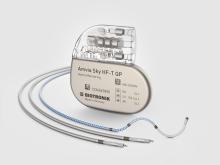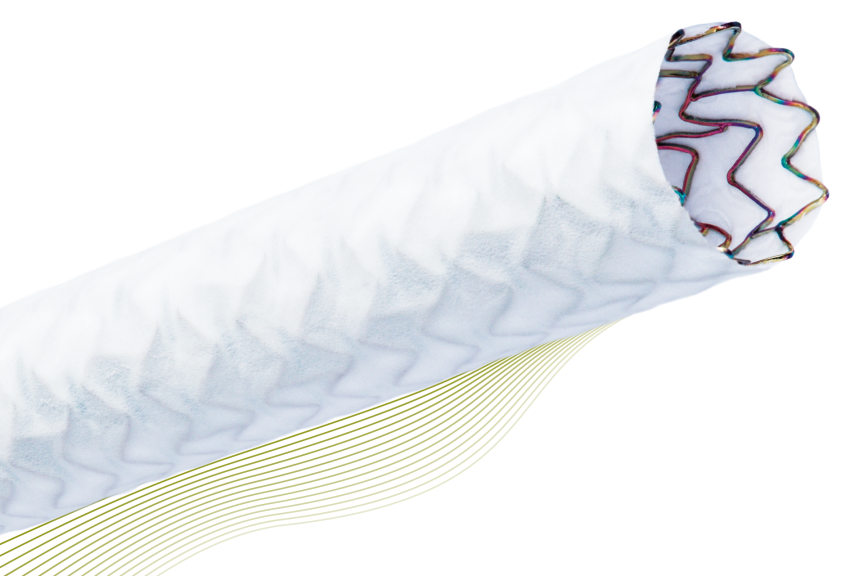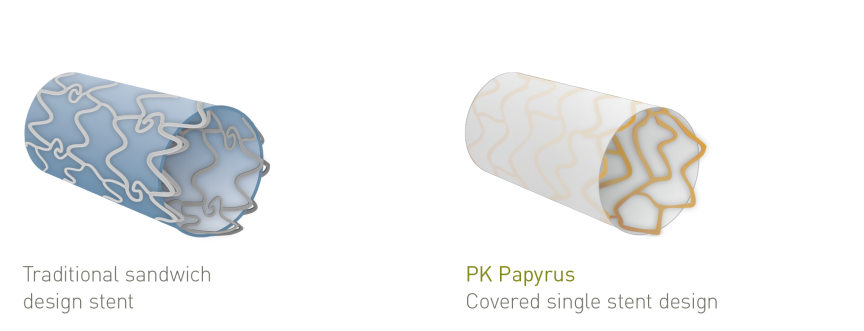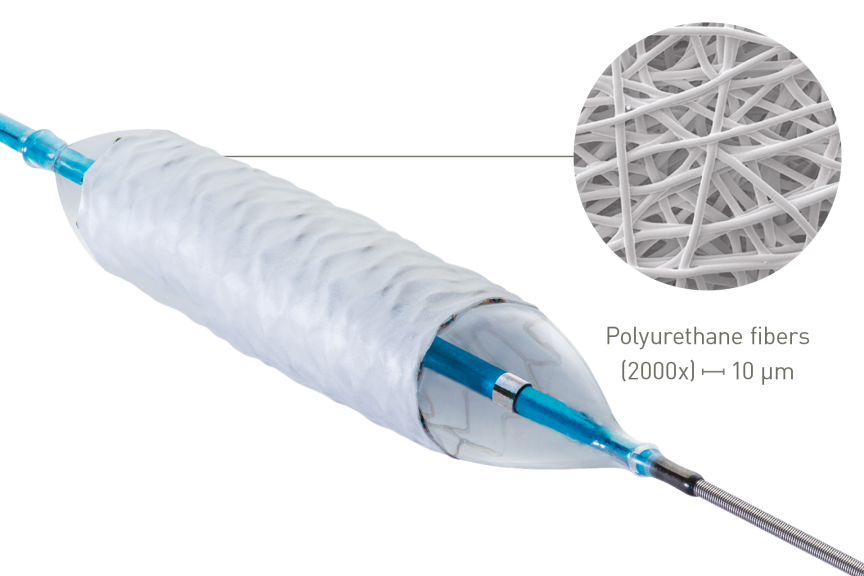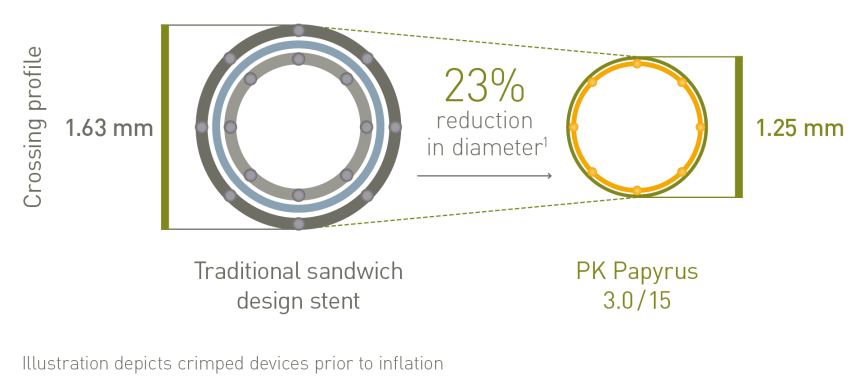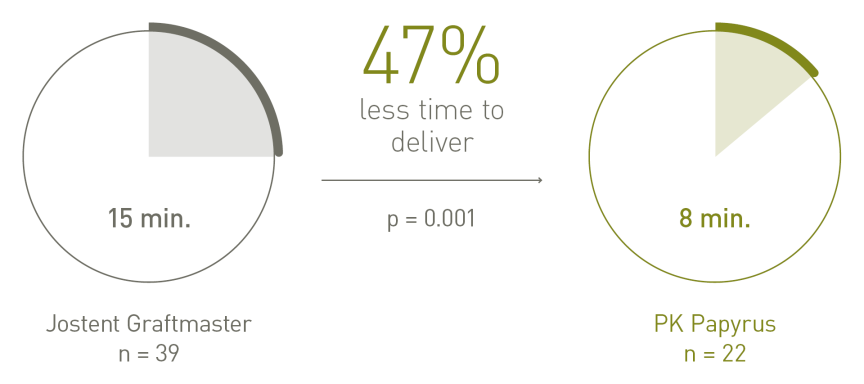High bending flexibility¹
With its covered single stent design, PK Papyrus covered stent achieves greater bending flexibility and a smaller crossing profile compared to the traditional sandwich design stentb, allowing you to seal perforations with confidence.1
Innovative polyurethane membrane
Unique manufacturing method allows for an ultrathin membrane capable of sealing vessel perforations. Electrostatic forces spin polyurethane fibers onto the stent surface, creating a thin and highly elastic membrane.1
